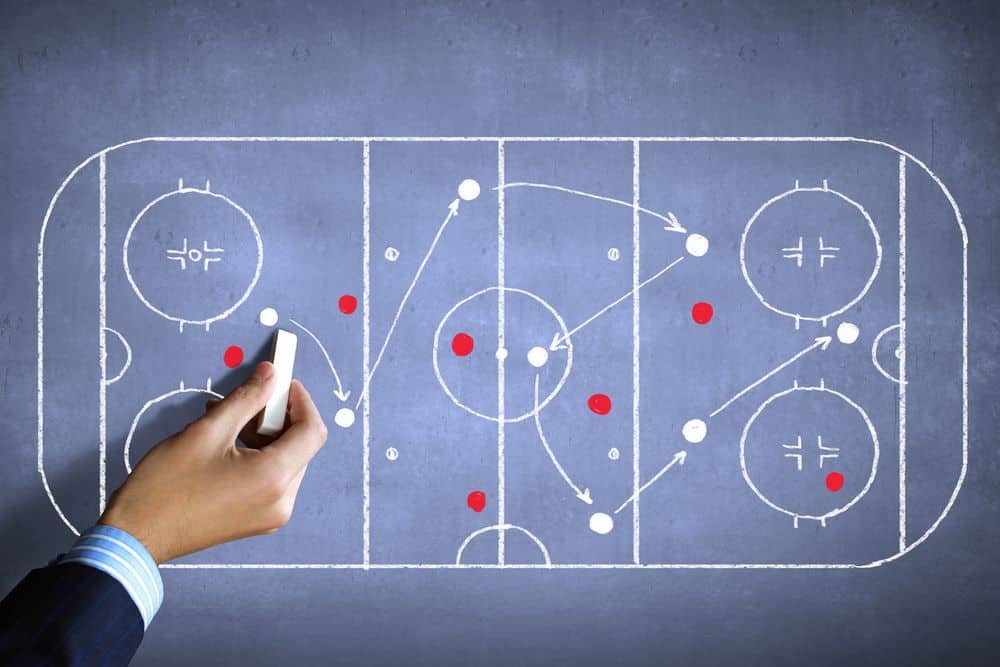Did you know that in the game of hockey, each position comes with its own unique set of challenges and responsibilities? For beginners looking to enter the world of hockey, understanding the varying levels of difficulty among different positions is crucial.
This article aims to provide an insightful analysis of the easiest hockey position for beginners. By examining the skills required and specific role of each position, we will shed light on the position that offers a more accessible entry point, helping newcomers navigate the world of hockey positions with confidence.
Winger: The Easiest Hockey Position
The winger position in hockey is widely regarded as the easiest. Wingers have the advantage of focusing primarily on maximizing scoring opportunities and finding the best spot to attack the opponent’s net. Their strategies revolve around positioning themselves in areas that allow for quick and effective shots on goal.
Wingers often utilize speed and agility to forecheck aggressively, putting pressure on opponents and creating turnovers. By cycling the puck to forwards in the offensive zone and taking shots from the point, wingers contribute significantly to the team’s offensive strategy.
In addition, left wingers with a left-handed shot have a higher likelihood of scoring goals, adding an advantage to the position. Overall, the winger position offers a straightforward role that allows players to focus on driving the offense and creating scoring opportunities.
Goaltender: The Hardest Hockey Position
Playing goaltender in hockey is widely considered to be the most challenging position due to the demanding physical and mental skills required. The goalie position requires exceptional agility, lightning-fast reflexes, and immense mental strength to make split-second decisions.
Goalies face intense scrutiny and pressure, as they are responsible for protecting the net and preventing the opposing team from scoring. They are constantly under the watchful eyes of both teammates and spectators, with every save or goal being closely analyzed. The pressure to perform at a high level and make crucial saves can be overwhelming.
Additionally, goalies need to have thick skin physically and metaphorically to handle the physical demands of the position and bounce back from setbacks. The goaltender position truly tests a player’s skills and mental fortitude.
Roles and Responsibilities of Forwards
Forwards, as a group of players responsible for driving the offense and creating scoring opportunities, play a crucial role in the team’s strategy. Their main objective is to attack the opponent’s net and create scoring opportunities.
To accomplish this, forwards employ various strategies such as forechecking aggressively to pressure opponents, cycling the puck to other forwards in the offensive zone, and taking shots from the point.
On the defensive side, forwards also have responsibilities to protect their own net. This includes blocking shots and checking opponents to prevent them from getting scoring chances. To summarize the roles and responsibilities of forwards, the following table provides a comprehensive overview:
| Forward Strategies | Defensive Responsibilities |
|---|---|
| Creating scoring opportunities | Blocking shots |
| Attacking the opponent’s net | Checking opponents |
Importance and Responsibilities of the Center Position
Centers in hockey hold a critical role, both offensively and defensively, making them an essential component of the team’s gameplay. They are the linchpin that connects the forwards and defensemen, and their responsibilities extend to various areas of the ice.
Key responsibilities and skills needed for the center position in hockey include:
- Face-offs: Centers are responsible for winning face-offs, which are crucial in gaining possession and initiating offensive plays.
- Playmaking: Centers excel in distributing the puck to their teammates, setting up scoring opportunities, and creating offensive plays.
- Defensive coverage: Centers act as the third defenseman in their own zone, providing support and helping to break up opponent’s plays.
- Transition game: Centers play a vital role in leading the puck out of the defensive zone and transitioning into the offensive zone.
To excel as a center in hockey, here are some tips and strategies:
- Develop strong skating and agility skills to navigate through tight spaces.
- Improve stickhandling and passing abilities to make accurate and quick plays.
- Enhance defensive awareness and positioning to contribute effectively in both zones.
- Communicate with teammates to coordinate plays and maintain team cohesion.
Offensive and Defensive Responsibilities in Hockey
The offensive and defensive responsibilities in hockey encompass crucial roles that contribute to the overall gameplay and strategic execution of the team. In the offensive zone, strategies for effective forechecking and creating scoring opportunities are key.
Wingers play a vital role in pressuring opponents and taking away the puck to create quick scoring chances. They also cycle the puck to forwards and take shots from the point. In contrast, defensemen have the responsibility of blocking shots and protecting the net in the defensive zone.
They start the breakout in their own zone and assist forwards in creating plays in the offensive zone. Additionally, defensemen check opponents and ensure the safety of their own net. The table below summarizes the offensive and defensive responsibilities in hockey:
| Offensive Responsibilities | Defensive Responsibilities |
|---|---|
| – Attack opponents’ net and create scoring opportunities | – Block shots and protect the net |
| – Forecheck aggressively to pressure opponents | – Start the breakout in their own zone |
| – Take away the puck from opponents for quick scoring chances | – Assist forwards in the offensive zone |
| – Cycle the puck to forwards in the offensive zone | – Check opponents and protect the net |
| – Take shots from the point | – Ensure defensive zone safety |
Understanding and executing these offensive and defensive responsibilities are essential for a team’s success on the ice.
Frequently Asked Questions
What Are the Key Skills and Attributes Needed to Excel as a Winger in Hockey?
Key skills and attributes needed to excel as a winger in hockey include speed, agility, and scoring ability. Wingers play a crucial role in the team’s offensive strategy by attacking the opponent’s net and creating scoring opportunities.
Can a Player Switch From Playing Winger to Another Position Later in Their Hockey Career?
Switching positions in hockey can be a strategic move for players looking to expand their role and versatility. While transitioning from winger to another position requires acquiring new skills and adapting to different responsibilities, it can enhance a player’s overall hockey career.
How Do Wingers Contribute to the Team’s Defensive Strategy?
Wingers contribute to the team’s defensive strategy through their defensive positioning and backchecking techniques. By maintaining proper defensive positioning and using effective backchecking, wingers can disrupt the opponent’s offensive plays and help protect their own net.
Are There Any Specific Strategies or Techniques That Wingers Use to Create Scoring Opportunities?
Wingers play a crucial role in creating scoring opportunities by utilizing specific strategies and techniques. They often position themselves in high-scoring areas, forecheck aggressively, and work with their linemates to cycle the puck in the offensive zone.
What Are Some Common Challenges or Obstacles That Wingers Face on the Ice?
Wingers face various challenges on the ice, including tight defensive coverage, physical play, and adapting to different line combinations. They must also employ offensive tactics such as positioning, forechecking, and creating scoring opportunities through quick puck movement.
Conclusion
In conclusion, when it comes to finding the easiest hockey position for beginners, the winger position stands out as a favorable choice. With fewer defensive responsibilities and a focus on offensive play, beginners can ease into the game while developing their skills.
However, it is important to note that each position in hockey comes with its own unique challenges and responsibilities. By understanding the roles and responsibilities of each position, beginners can make an informed decision about where to start their hockey journey.









